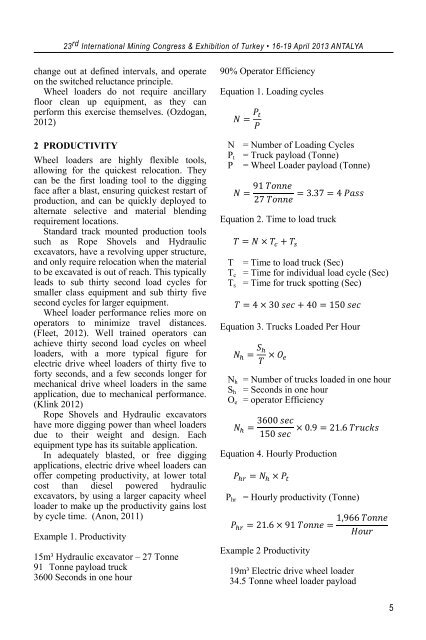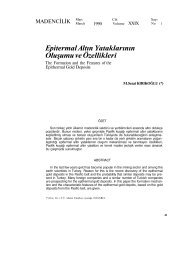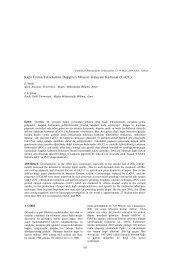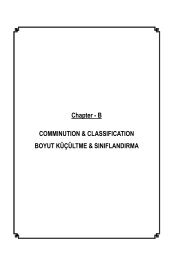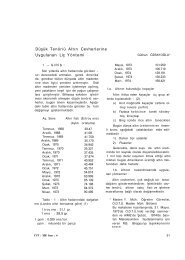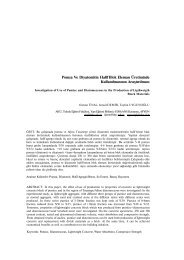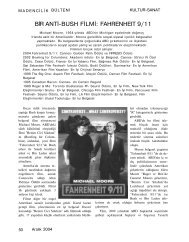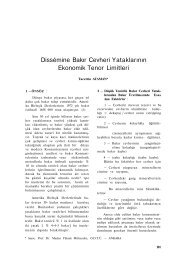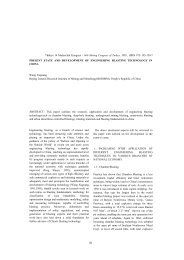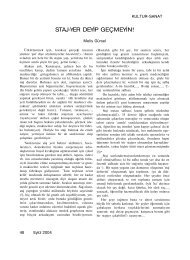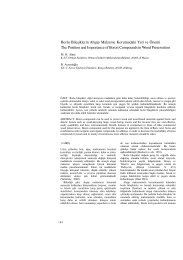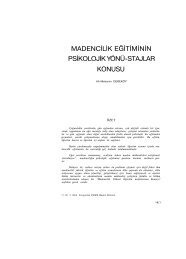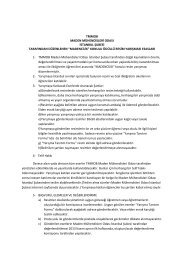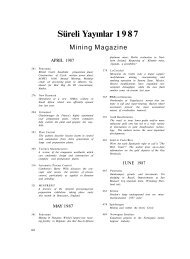A OPEN PIT MINING AÇIK OCAK MADENCİLİĞİ
A OPEN PIT MINING AÇIK OCAK MADENCİLİĞİ
A OPEN PIT MINING AÇIK OCAK MADENCİLİĞİ
Create successful ePaper yourself
Turn your PDF publications into a flip-book with our unique Google optimized e-Paper software.
23 rd <br />
change out at defined intervals, and operate<br />
on the switched reluctance principle.<br />
Wheel loaders do not require ancillary<br />
floor clean up equipment, as they can<br />
perform this exercise themselves. (Ozdogan,<br />
2012)<br />
2 PRODUCTIVITY<br />
Wheel loaders are highly flexible tools,<br />
allowing for the quickest relocation. They<br />
can be the first loading tool to the digging<br />
face after a blast, ensuring quickest restart of<br />
production, and can be quickly deployed to<br />
alternate selective and material blending<br />
requirement locations.<br />
Standard track mounted production tools<br />
such as Rope Shovels and Hydraulic<br />
excavators, have a revolving upper structure,<br />
and only require relocation when the material<br />
to be excavated is out of reach. This typically<br />
leads to sub thirty second load cycles for<br />
smaller class equipment and sub thirty five<br />
second cycles for larger equipment.<br />
Wheel loader performance relies more on<br />
operators to minimize travel distances.<br />
(Fleet, 2012). Well trained operators can<br />
achieve thirty second load cycles on wheel<br />
loaders, with a more typical figure for<br />
electric drive wheel loaders of thirty five to<br />
forty seconds, and a few seconds longer for<br />
mechanical drive wheel loaders in the same<br />
application, due to mechanical performance.<br />
(Klink 2012)<br />
Rope Shovels and Hydraulic excavators<br />
have more digging power than wheel loaders<br />
due to their weight and design. Each<br />
equipment type has its suitable application.<br />
In adequately blasted, or free digging<br />
applications, electric drive wheel loaders can<br />
offer competing productivity, at lower total<br />
cost than diesel powered hydraulic<br />
excavators, by using a larger capacity wheel<br />
loader to make up the productivity gains lost<br />
by cycle time. (Anon, 2011)<br />
Example 1. Productivity<br />
15m³ Hydraulic excavator – 27 Tonne<br />
91 Tonne payload truck<br />
3600 Seconds in one hour<br />
90% Operator Efficiency<br />
Equation 1. Loading cycles<br />
<br />
<br />
N = Number of Loading Cycles<br />
P t = Truck payload (Tonne)<br />
P = Wheel Loader payload (Tonne)<br />
<br />
<br />
Equation 2. Time to load truck<br />
<br />
T = Time to load truck (Sec)<br />
T c = Time for individual load cycle (Sec)<br />
T s = Time for truck spotting (Sec)<br />
<br />
Equation 3. Trucks Loaded Per Hour<br />
<br />
<br />
N h = Number of trucks loaded in one hour<br />
S h = Seconds in one hour<br />
O e = operator Efficiency<br />
<br />
<br />
Equation 4. Hourly Production<br />
P hr<br />
<br />
= Hourly productivity (Tonne)<br />
<br />
<br />
Example 2 Productivity<br />
19m³ Electric drive wheel loader<br />
34.5 Tonne wheel loader payload<br />
5


